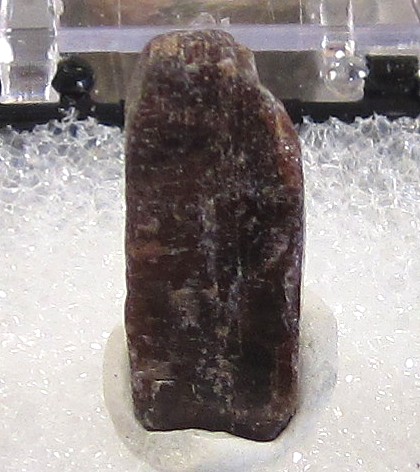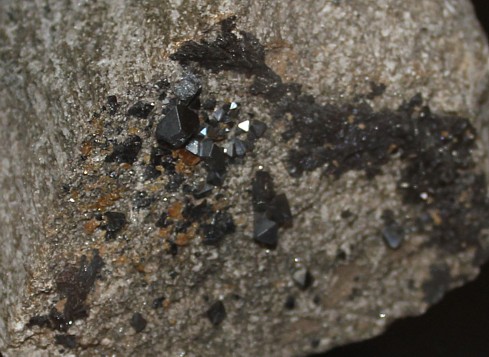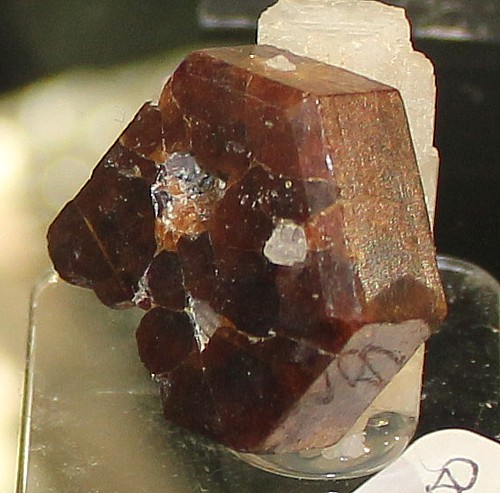The rare earth elements are a group of fifteen elements that are closely related plus yttrium and scandium, which are chemically similar and typically included with the rare earth elements. The rare earths are a relatively abundant group of elements with a relative abundance in the Earth's crust greater than many better known elements. The total group of seventeen elements includes cerium, dysprosium, erbium, europium, gadolinium, holmium, lanthanum, lutetium, neodymium, praseodymium, samarium, terbium, thulium, ytterbium, yttrium and scandium. Although industrial demand for these elements is relatively small in tonnage terms, they are essential for a diverse and expanding number of high technology applications. Rare earths are essential for specialized powerful magnets, metal alloys for batteries and light-weight structures, as well as phosphors that are essential for many current and emerging alternative energy technologies. These include hybrid and electric vehicles, energy-efficient lighting, and wind power. Rare earths are also critical for a number of key defense systems and other advanced materials.
Rare-earth metals production is principally derived from four different rare earth ores bastnaesite, monazite, xenotime, and ion-adsorption clay. Bastnasite is the world's principal source of rare earths and is produced in China and the United States. Significant quantities of rare earths are also recovered from the mineral monazite. Xenotime and ion-adsorption clays account for a much smaller part of the total production but are important sources of yttrium and other heavy-group rare earths. Bastnaesite is a rare earth fluoro-carbonate mineral containing cerium, lanthanum and yttrium as well as small amounts of all the rare earth metals and thorium. There is little change in terms of physical properties caused by higher lanthanum or yttrium contents and most bastnäsite is the cerium rich form. Cerium in most natural bastnäsites usually dominates the other rare earth metals, but the mineral does contain small amounts of all seventeen rare earth metals.
Monazite is normally cerium phosphate but the entire suite of rare earth metals including praseodymium, lanthanum, neodymium as well as thorium, are generally present in it. Monazite occurs in minute quantities as an accessory constituent of some granites and also in dykes within that rock, this latter occurrence having been noted in South Africa. The useful deposits of this mineral are virtually always alluvial gravels. Monazite has been found and exploited in many widely separated regions. In the Bahia, Minas Gerais, Rio de Janeiro and Sao Paulo districts of Brazil, it has been found in the porphyritic, granulitic, and schistose gneisses, and in granitic dykes. It occurs in the gneiss of Northern Carolina, in apatite bearing rocks in Norway, and in pegmatites in Southern Norway. The monazite sands of Brazil, of which those of Prado are the most important, are derived from granites and gneisses. They seldom exceed half a yard in thickness, and occasionally yielded 70 percent monazite. The North and South Carolina deposits were once extremely rich, but are now largely exhausted. In placers this mineral is usually associated with those of a similar character, including xenotime, fergusonite, jadolinite, samarskite, uraninite, etc., These have undoubtedly been furnished by the disintegration of crystalline rocks upstream. It is naturally concentrated by reason of its high specific gravity.
Xenotime is a phosphate of yttria, but also contains the rare earths of the cerium group. These minerals are exploited for the rare earths they contain, and especially for thorium, which is used for making glowers and mantles for lights. The principal production in the US was derived from the Carolinas, east of the Blue Ridge. The country is an area of gneiss, schist, and granite, cut by various intrusive rocks, including extensive dikes of pegmatite. The monazite is mined mainly from placers, but some is mined from pegmatized gneiss in place, especially where the gneiss has rotted.
Thorite, a silicate of thorium, occurs generally as minute grains in dykes of pegmatite granite or syenite but also as a curiosity in the apatite lodes of Norway, is now no longer worked for the production of thorium. The orange-colored variety known as orangite and the dark-brown or black variety, being decomposed by self-irradiation, weathering and hydration, do not agree exactly with the theoretical formula. The black version supposedly represents a more advanced stage in this radioactive decomposition and weathering than orangite. It contains rare earth metals and uranium and is worked for its content of these metals. It is a minor source of rare earths.
Cerium is the most common of the rare earth metals, and together with the other rare earths occurs as an essential constituent of a considerable number of minerals, the more notable of which are monazite (phosphate of the rare earth metals), cerite (hydrated cerium silicate), and allanite (silicate of iron, calcium, aluminum, and the rare earth metals) and Bastnaesite (rare earth fluoro-caronate). The only minerals of commercial importance as a source of cerium and the rare earths are bastnaesite and monazite.
At one time, monazite was chiefly valuable as a source of thorium and the rare earths of monazite were for a long time were considered practically a waste product. Cerium was used to a small extent in the form of cerium oxalate as a medicine, but the amount thus used was negligible in proportion to the total ceria available. In recent years uses have been found for it as a polishing agent, as a phosphor used in screens and fluorescent lamps, and in the manufacture of a pyrophoric alloy with iron (mischmetal or ferrocerium) in which cerium is an essential constituent. However so long as bastnaesite and monazite continue as the chief sources of rare earths, the ceria obtained from it as a byproduct will probably supply all, and more than all, the need for cerium compounds required. As a result, the price of cerium is low among the rare earths. Ferrocerium, of which sparking devices are made, contains about 30 per cent, of iron. A large amount of cerium fluoride was used as a phosphor during the world war in connection with naval searchlights; and by virtue of its inflammability through air friction, ferrocerium was used to illuminate the paths of shells.
Most rare earth occurrences can be generally classified into the following deposit types: carbonatites, carbonatites with residual enrichment, alkaline igneous complexes, hydrothermal iron-oxide deposits (IOCG), deposits hosted by metamorphic rocks, pegmatites, alluvial and beach placer deposits, paleoplacers, ion adsorption weathering crusts, phosphorites and certain types of uranium deposits. The gigantic rare earth carbonatite deposit at Mountain Pass was discovered almost by accident in 1949, when two prospectors using a Geiger counter staked a series of claims on a radioactive outcrop they thought held potential as a uranium ore. Samples were sent to the U.S. Geological Survey and the "ore" was identified as the rare earth fluorocarbonate bastnaesite and the radiation was caused not by uranium but traces of thorium in the ore.
For many years, the deposit at Mountain Pass was the world's dominant source of rare earth elements and the United States was essentially self-sufficient in the critical rare earth elements, but over the past decade the country has become dependent upon imports. Domestic mine production of bastnasite during the 1970's and 1980's showed a large overall increase. However by 2000, more than 90% of the rare earths required by U.S. industry came from deposits in China. Over the past ten years the only domestic source of rare earths, the mine at Mountain Pass, California, has operated well below capacity and only intermittently. China now dominates world markets, raising several important issues of supply for the United States. However, due to increased prices for the rare earth metals in recent years, exploration and mining for rare earths have been stimulated. As a result, Molycorp has again begun to actively mine bastnasite by open pit methods at Mountain Pass, and Molycorp's mine is project to again become a leading producer of rare earths.
These four minerals, Bastnaesite, Monazite Xenotime and Thorite, all require special chemical treatment with acids to dissolve, extract and separate their basic elements. The increased levels of purity needed for processing these ores is needed for many of the high tech uses to which they are critical. Because of the chemicals, this type of refining process can hold potential environmental problems if not properly managed. Monazite is processed for its rare-earth content as a byproduct during processing of heavy sand concentrates for titanium and zirconium minerals. These sands have been produced by a sand dredging operation at Green Cove Springs, Florida. Molycorp produces refined rare earth products from bastnasite at its separation plant at Mountain Pass, CA.
Return
to Metal Ores Page:
Precious and Base Metal Ores

Above: Xenotime, a minor rare earth metal ore mineral.

Above: Monazite, a secondary ore mineral for Rare Earths

Above: Bastnaesite, the most important rare earth ore mineral.
